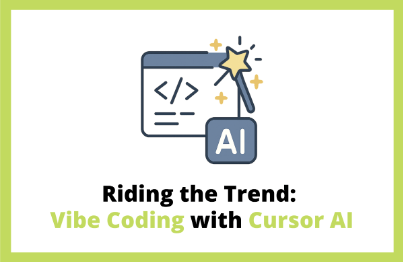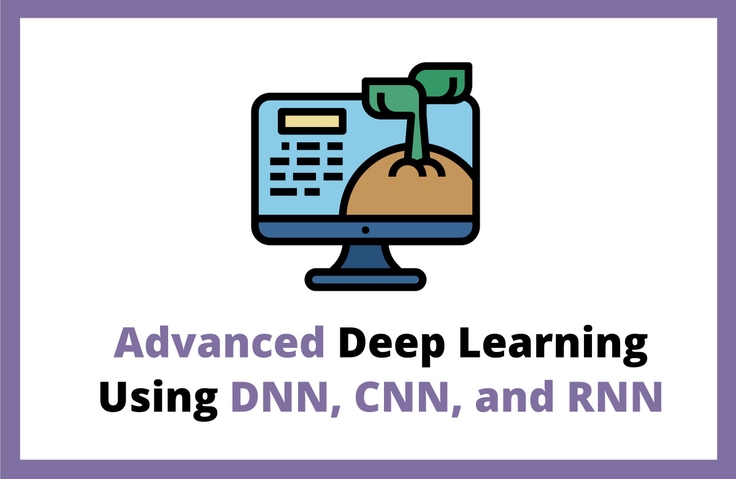
Start with Vibe Coding and MCP_Cursor AI: The Trend
Masocampus
The Latest Trend in Generative AI, AI Agents! How to Stay Ahead with Cursor, which handles all development tasks, and MCP, which expands functionality!
입문
cursor, mvp, AI Agent
DNN, CNN, RNN? This lecture perfectly organizes the core algorithms of deep learning and puts them into practice through practical deep learning training, even with difficult-looking technical terms!
35 learners
Level Basic
Course period Unlimited

Understanding the Deep Learning Development Process
Understand the components and model principles of DNN, CNN, and RNN
Understanding the various frameworks of Tensorflow Keras
Ability to utilize deep learning algorithms through various deep learning practices
Through this course, you will understand the operating principles of DNN, CNN, and RNN, which are the hottest technologies today, and you will be able to implement deep learning models through practice .
STEP 1. Understand the concepts and operating processes of DNN, CNN, and RNN.
Among the numerous deep learning algorithms, we will take a detailed look at and delve into the principles of DNN, CNN, and RNN , as they show different levels of performance depending on which algorithm is used in which situation !
STEP 2. Practice the Deep Learning Modeling Process
Representative deep learning algorithms , regression and classification !
DNN, CNN, and RNN can perform regression and classification much more precisely and accurately than machine learning!
You can use deep learning algorithm models that I designed myself and use them in various practical ways to apply them immediately .
STEP 3. Bringing insights discovered in the digital world to the real world
If we design and train models using various techniques of deep learning algorithms and then apply the obtained insights to actual work , we can bring about revolutionary advancements in data-based decision-making in a vast range of areas, including sales , development , and human resources .
Deep learning brings overwhelming productivity improvements regardless of the field !
A course that simultaneously teaches in-depth theory and practice through detailed explanations of the core algorithms of deep learning !
![[onc74] DLW202 Multiple Linear Regression Model Design and Prediction](https://www.masocampus.com/wp-content/uploads/2022/12/onc74-DLW202-%EB%8B%A4%EC%A4%91%EC%84%A0%ED%98%95%ED%9A%8C%EA%B7%80-%EB%AA%A8%EB%8D%B8-%EC%84%A4%EA%B3%84%EC%99%80-%EC%98%88%EC%B8%A1.gif)
![[onc74] DLW303 Confusion Matrix and Learning Process Visualization](https://www.masocampus.com/wp-content/uploads/2022/12/onc74-DLW303-%ED%98%BC%EB%8F%99-%ED%96%89%EB%A0%AC%EA%B3%BC-%ED%95%99%EC%8A%B5-%EA%B3%BC%EC%A0%95-%EC%8B%9C%EA%B0%81%ED%99%94.gif)
![[onc74] DLW501 Stride, Filter, and CNN Operational Process](https://www.masocampus.com/wp-content/uploads/2022/12/onc74-DLW501-%EC%8A%A4%ED%8A%B8%EB%9D%BC%EC%9D%B4%EB%93%9C-%ED%95%84%ED%84%B0%EC%99%80-CNN%EC%9D%98-%EC%97%B0%EC%82%B0-%EA%B3%BC%EC%A0%95.gif)
![[onc74] MNIST Handwriting Recognition Using DLW602 CNN](https://www.masocampus.com/wp-content/uploads/2022/12/onc74-DLW602-CNN%EC%9D%84-%EC%9D%B4%EC%9A%A9%ED%95%9C-MNIST-%EC%86%90%EA%B8%80%EC%94%A8-%EC%9D%B8%EC%8B%9D.gif)
![[onc74] News Category Classification Using DLW802 LSTM](https://www.masocampus.com/wp-content/uploads/2022/12/onc74-DLW802-LSTM%EC%9D%84-%EC%9D%B4%EC%9A%A9%ED%95%9C-%EB%89%B4%EC%8A%A4-%EC%B9%B4%ED%85%8C%EA%B3%A0%EB%A6%AC-%EB%B6%84%EB%A5%98.gif)
Q. Is prior knowledge of Python programming required ?
A. This course and subsequent deep learning courses on Maso Campus require basic Python skills . If you're unfamiliar with Python, we recommend taking Maso Campus ' " Introduction to Python Data Analysis " and " Practical Python Data Analysis " courses first .
Q. Are there any requirements or prerequisites for taking the course ?
A. Since this is a practice-oriented lecture, it would be a good idea to prepare a dual monitor or extra device that can separate the lecture and practice screens .
Q. I heard that deep learning requires a high-spec PC . Is a high-spec PC necessary for practical training ?
A. It is recommended to run it in a high-spec environment , but since this lecture is conducted in a virtual environment using Anaconda and Jupyter Notebook , you will have no difficulty taking the lecture if you have a general work PC .

Who is this course right for?
Practitioners who want to try out AI in their work
Anyone who wants to build a career in the IT industry, such as starting a business, changing jobs, or joining a company
Managers and practitioners who want to introduce artificial intelligence into their business
Anyone who wants to start by learning core techniques to build deep learning capabilities.
Need to know before starting?
This course requires basic Python skills.
I recommend that you take Maso Campus' [Introduction to Python] and [Python Practice] courses first.
8,900
Learners
1,232
Reviews
109
Answers
4.7
Rating
95
Courses
"어제보다 성장하겠습니다. 그리고, 어제보다 성장하려는 사람을 돕겠습니다."
마소캠퍼스의 진심과 소망을 담은 Actionable Content로,
2013년부터 온오프라인으로 함께해 온 누적 강의 1억시간!
이 소중한 경험과 시간은 언제나 마소캠퍼스와 수강생 모두의 성장의 원천입니다.
마소캠퍼스 팀은 우리의 모두의 성장을 위해 두 가지 원칙을 반드시 지킵니다.
1. 배우면 반드시 쓸 수 있는 Actionable Content
2. 참여자의 시간과 수고를 존중하는 Time-Saving Curriculum
마소캠퍼스의 Actionable and Time-Saving Curriculum으로 성장의 길을 함께 걸어나가길 기원합니다.
All
26 lectures ∙ (4hr 33min)
Course Materials:
All
3 reviews
3.7
3 reviews
Reviews 2
∙
Average Rating 5.0
5
Thank you for leaving a review! 😊 It's rewarding to see that the hard work we put in has paid off. Moso Campus will always do its best!
Reviews 1
∙
Average Rating 5.0
5
It's good for introduction.
I'm glad that it was a good introductory lecture😊 I will prepare the next lecture well to match the level of the target students!
Reviews 1
∙
Average Rating 1.0
1
Data preprocessing using tokenizer - isn't the embedding part included in the lecture? The key point is missing ;;;;;;;;
Thank you for taking the course and leaving a constructive review. We will actively consider the curriculum to reflect the points you pointed out when planning future courses.
Limited time deal ends in 1 days
$44.00
28%
$61.60
Check out other courses by the instructor!
Explore other courses in the same field!